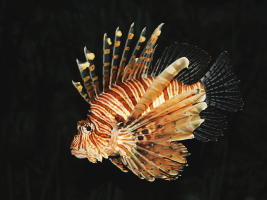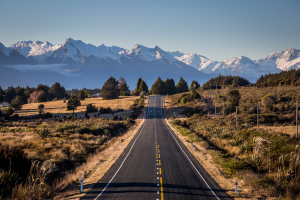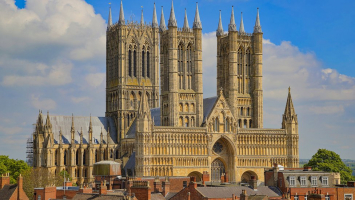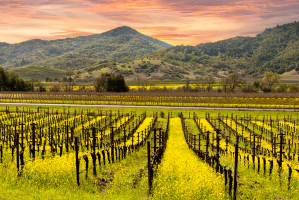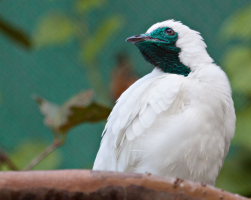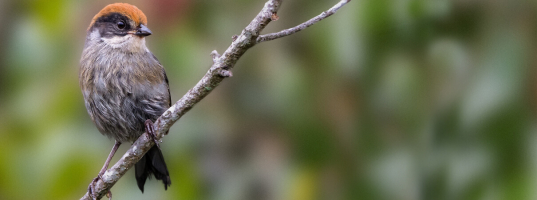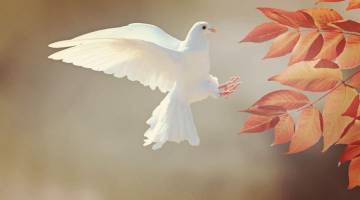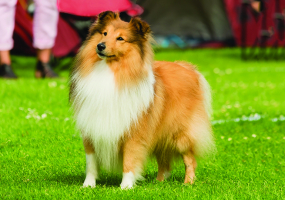Top 10 Most Beautiful Birds In The World
The animal world is extremely rich and diverse. Especially birds, some individuals impress people with their beauty. Let's join Toplist to discover the most ... read more...beautiful birds in the world!
-
The first position on the list of the most beautiful birds in the world is the golden pheasant (Chrysolophus pictus), which is sometimes referred to as the Chinese pheasant, and the rainbow pheasant is a gamebird belonging to the family Phasianidae and the order Galliformes (gallinaceous birds). The word "painted" comes from the Latin word "pictus," which is derived from the Ancient Greek verb khrusolophos, which means "with golden crest."
The tail makes up two-thirds of the mature male's length, which ranges from 90 to 105 cm (35 to 41 in). It may be easily identified thanks to its golden crown, rump, and vivid red body. When the dark orange "cape" is extended out in display, it takes on the appearance of a black and orange fan that alternates, covering the entire face except from the bright yellow eye with a little black pupil.
They have a magnificent red-tipped golden-yellow crest. Their face and belly are both a vivid crimson color. Tan on the sides and throat that has aged. The upper back and wattle of the golden pheasant are green. They also have dark red shoulder feathers and a long, pale brown tail. Compared to female golden pheasants, males are smarter. Their red breasts and flanks help to identify them. Additionally, their middle tail feathers feature noticeable black patches on them. Compared to males, female pheasants have duller, more mottled brown feathers.
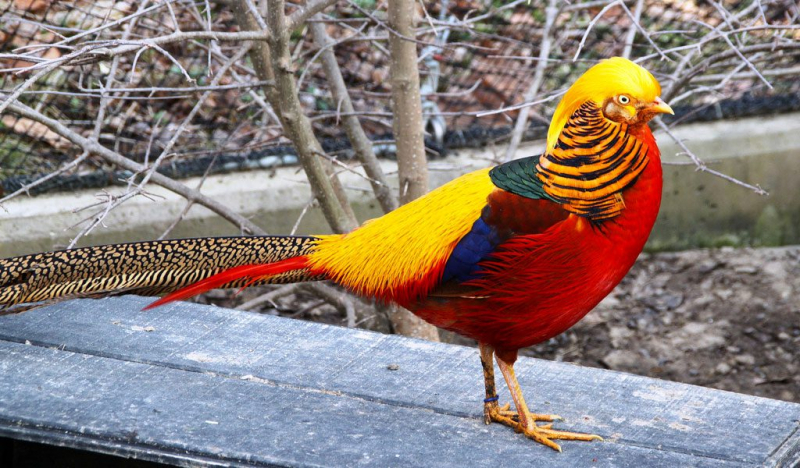
Photo: animalcorner.org 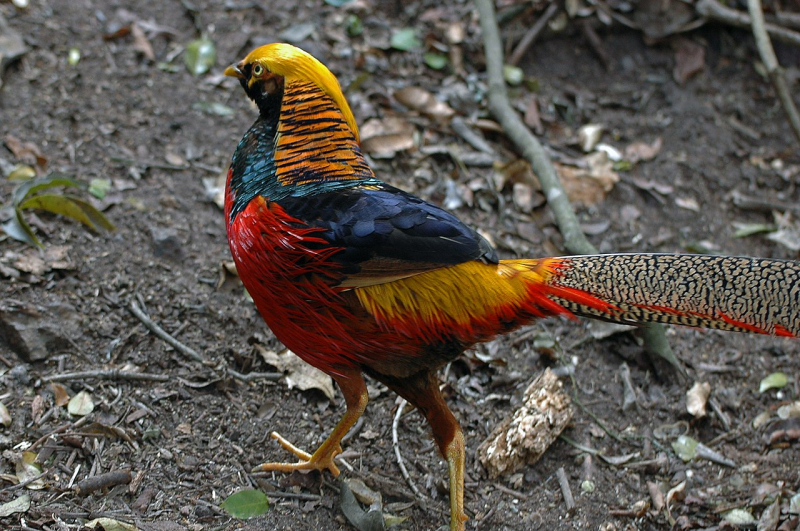
Photo: wikimedia commons -
The scarlet macaw is a sizable red, yellow, and blue Neotropical parrot that is a part of the macaw family. It is found in Central and South America. It is indigenous to the Neotropical wet evergreen woodlands. Its range includes lowlands between 500 meters and 1,000 meters (3,300 feet) above sea level in south-eastern Mexico, Peru, Ecuador, Colombia, Bolivia, Venezuela, and Brazil, as well as Trinidad in the Caribbean and Coiba in the Pacific. Its former range extended from northern Mexico to southern Tamaulipas. It has experienced local extinction in some places due to habitat loss or capture for the pet parrot trade, but it is still reasonably widespread in other places. It is Honduras' national bird.
Due to its eye-catching plumage, the scarlet macaw, like its relative the blue-and-yellow macaw, is a well-liked bird in aviculture. The majority of the feathers are scarlet, but there are other colors present as well, including light blue on the rump and tail coverts, yellow on the greater upper wing coverts, dark blue on the upper sides of the flight feathers of the wings as well as the ends of the tail feathers, and dark red with metallic gold iridescence on the undersides of the wing and tail flight feathers. The wings of certain individuals may be green.
Although vocal communication is very diverse and captive macaws are considered to be skilled mimics of human speech, scarlet macaws primarily communicate by loud honking.
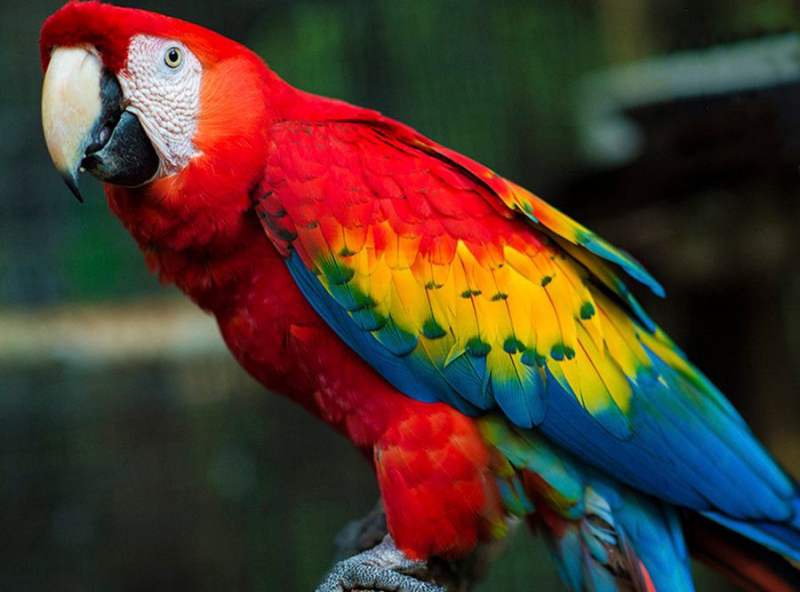
Photo: miaolands.com 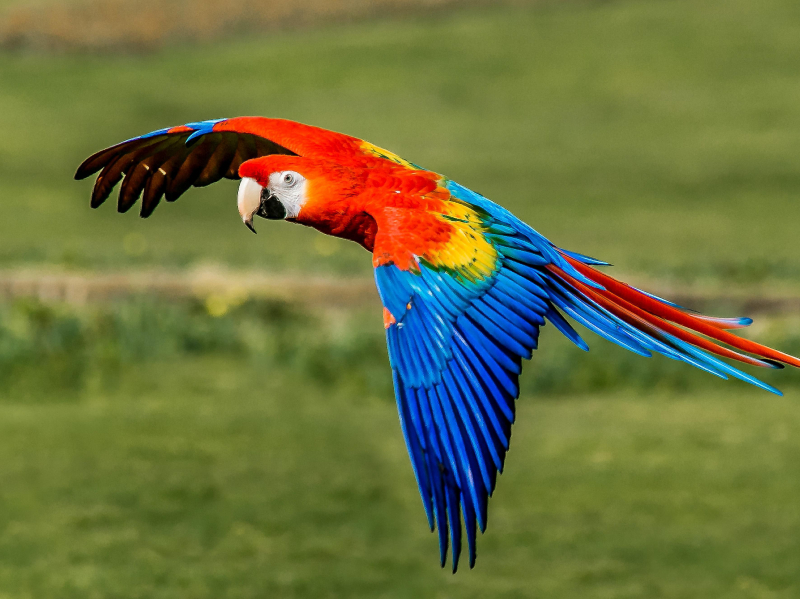
Photo: thesprucepets.com -
One of the most beautiful birds in the world is the Flamingo, often known as flamingoes, which is a species of wading bird that belongs to the sole extant family of the order Phoenicopteriformes, the Phoenicopteridae. There are two flamingo species that are endemic to Afro-Eurasia and four species that are spread out across the Americas.
Possibly the most well-known wading bird in the world is the flamingo. Because of their stunning red-purple feathers, flamingos stand out among other birds. There are six different species of flamingos on the globe. They can be found on every continent, with the exception of Antarctica. Adult flamingos can weigh up to 3.6 kg and reach lengths of 4-5 feet. Their beak is bent downward, and their throat is long and slender. The legs of flamingos are likewise very lengthy, ranging from 30 to 50 inches. Their lengthy legs and particularly modified beaks enable them to capture small fish, larvae, and planktons from the mud.
Flamingos are known for their loud vocalizations, which can range from grunting or growling to nasal honking. Recognition of parent-chick relationships, ritualized displays, and maintaining cohesiveness in big flocks all depend on vocalizations. The vocalizations of many flamingo species differ from one another.
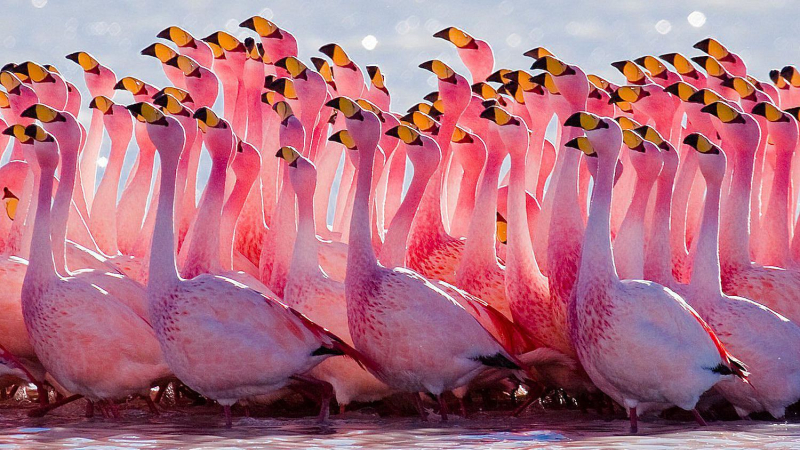
Photo: thespruce.com 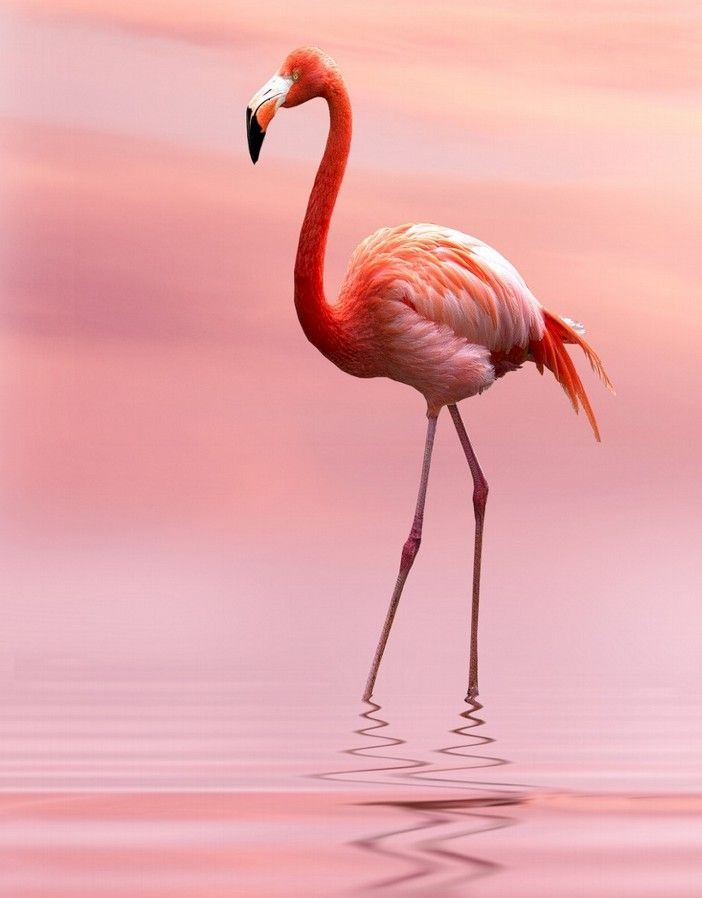
Photo: pinterest.com -
Even though peafowl of either sex are frequently referred to as "peacocks" in casual language, male peafowl is known as peacocks and female peafowl as peahens. An obvious kind of sexual dimorphism is present in Indian peafowl. The peacock is well recognized for its long train of extended upper-tail covert feathers that contain colorful eyespots. It has a brightly colored, primarily blue fan-like crest of wire-like feathers with spatula tips. During courtship, these stiff feathers are lifted into a fan and quivered. Peacocks can still fly in spite of the size and length of their covert feathers. Peahens lack the train and have a dark brown coat, a white face, and an iridescent green lower neck.
The Indian peafowl spends much of its time foraging for berries and grains on the ground in open forests or on land that is being farmed. They also hunt snakes, lizards, and small rodents. They are easily heard thanks to their powerful calls, which in dense woodland frequently signal the presence of a tiger-like predator. They hunt on the ground in small packs and typically attempt to flee on foot through the brush, however, they will occasionally soar into large trees to roost.
Loud sounds are made by peafowl, especially during the breeding season. When disturbed at night, they might make a relay-like series of calls with nearby birds. Aside from the six alarm calls that are frequently made by both sexes, nearly seven additional call variants have been discovered in peacocks.
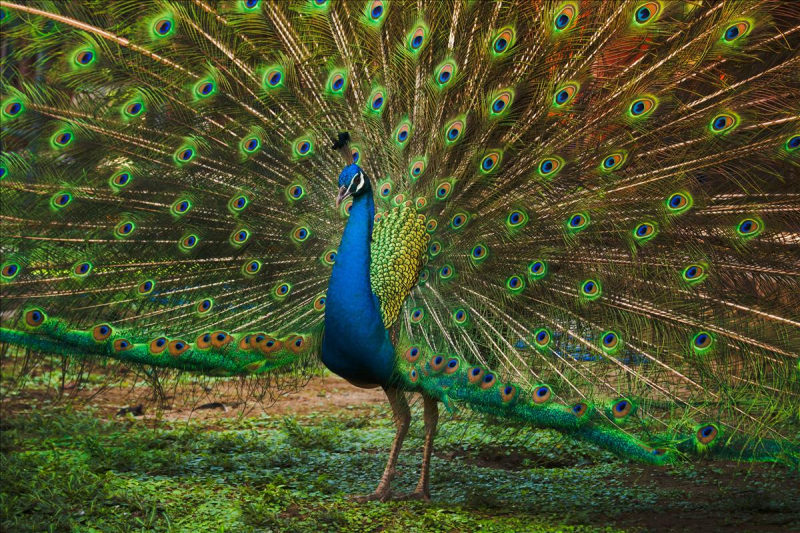
Photo: totorontozoo.com Video: https://www.youtube.com/watch?v=hP3qY3GrJKk -
A vibrant member of the toucan family from Latin America, the keel-billed toucan is sometimes known as the sulfur-breasted toucan or rainbow-billed toucan. It serves as Belize's national bird. Tropical jungles from southern Mexico to Colombia are home to the species. It is an omnivorous forest bird that consumes lizards, snakes, and eggs from tiny birds, fruits, seeds, insects, and invertebrates.
The jungles of Central and South America are home to this magnificent bird. They can get up to 4 kg in weight and 20 cm in length. Their chest and throat are yellow, while the remainder of their plumage is black. Keel-billed toucans have hefty wings, which makes them bad flyers. They can only navigate the tree branches by hoping.
Keel-billed toucans typically eat a variety of fruits, but their diets can also include insects, eggs, nestlings, and lizards. The toucan's bill, which is extremely agile, enables it to consume a wide range of fruit that it might not otherwise be able to. It breaks the fruit into pieces with its bill before swallowing it whole by throwing its head back.
Due to habitat loss, which has been rising recently, as well as shooting and trapping for the pet trade, this species is in danger. The species is considered to be Near Threatened because of the moderately rapid population loss it is experiencing. Keel-billed toucan is one of the most beautiful birds in the world is
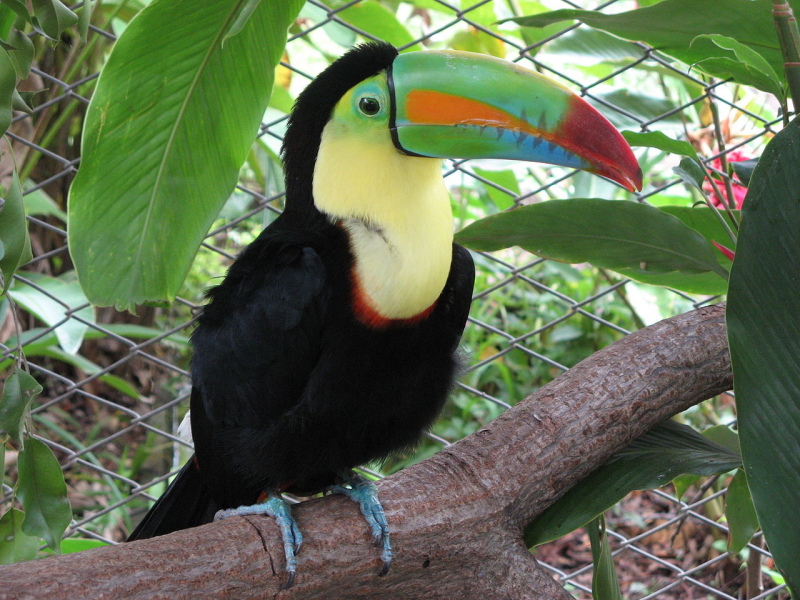
Photo: wikipedia 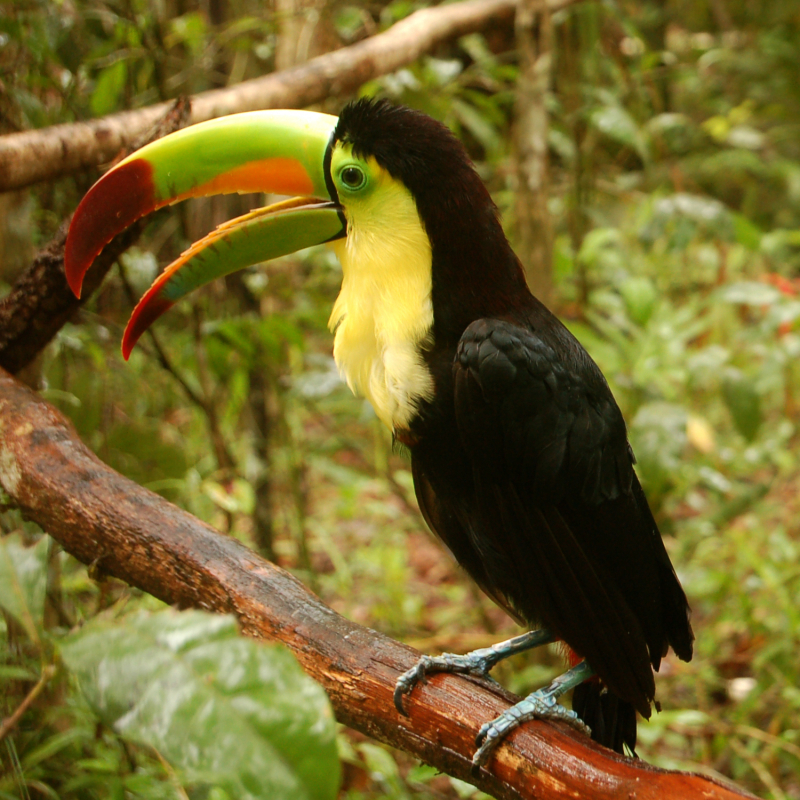
Photo: wikipedia.org -
The common puffin, or Atlantic puffin (Fratercula arctica), is a species of seabird in the auk family. The Atlantic Ocean is home to just one native puffin species. Despite having a sizable population and a huge geographic range, the species has experienced a rapid reduction, at least in some areas of its range, and the IUCN has designated it as vulnerable. It stands straight like an auk should when on land. It feeds on small fish and crabs while at sea by swimming on the surface and diving underwater while using its wings as propulsion.
This puffin has a white body and underparts, a black body and back, and pale grey cheek patches. Contrasting with its plumage is its large, sharply marked red-and-black beak and orange legs. When it molts in the winter when at sea, some of the highly colored face features are gone. In the spring, the color returns. The adult male and female share the same outward features, however, the male is typically slightly larger. Although the juvenile's cheek patches are dark grey, it has comparable plumage. The juvenile lacks brilliantly colored head decorations, has a thinner, dark-grey bill with a yellowish-brown tip, and dark-colored legs and feet.
In the Atlantic, puffins have outstanding diving skills. They are capable of diving down to depths of up to 60 meters. The most typical prey items are sand eels, capelins, and hakes. Additionally, Atlantic puffins are skilled flyers. They can fly at a speed of 55 mph while flapping their wings up to 400 times per minute.
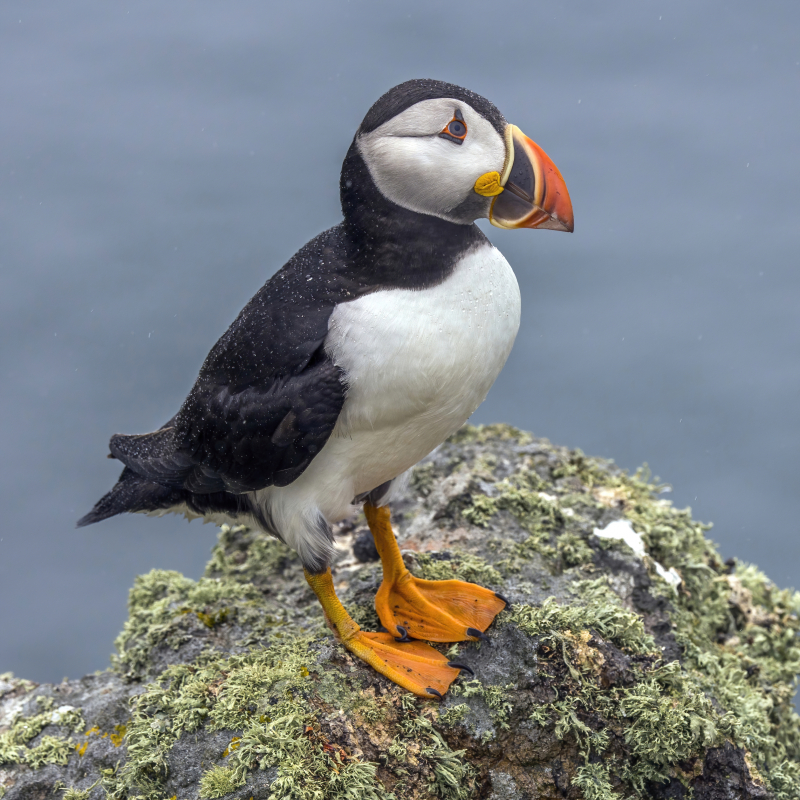
Photo: wikipedia 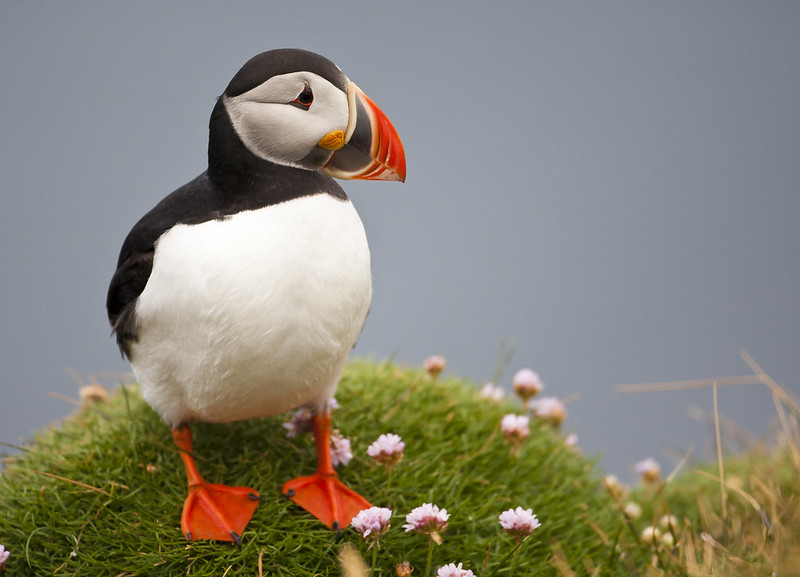
Photo: birdnote.org -
Among the most beautiful and clever birds in the world are blue jays. Forests in Eastern and Central North America contain them. Beautiful blue, white, and black feathers can be found on blue jays. The booming "jay jay"-like cries that this songbird makes are what set it apart from other birds. They have the ability to imitate several bird species' calls.
In addition to their beautiful looks, blue jays are renowned for their intellect. They have been observed stealing eggs and fledglings from other avian predators. Blue jays mimic the hawk's voice to trick other birds. It's rumored that blue jays kept in captivity can mimic both human speech and other canine voices.
Blue jays live in small flocks and are social birds. During the migration to the south in the winter, however, they form large flocks of hundreds of blue jays. Scientists are still baffled by their migration patterns. Some blue jays do not migrate during the winter; instead, they remain in their natural habitat. In addition, blue jays do not migrate every year.
A loud, brash, and aggressive passerine is the blue jay. When provoked, it flies somewhat slowly. It flies slowly while maintaining a level body and tail. When this species flies in wide spaces, its modest flight rates make it simple prey for hawks and owls.
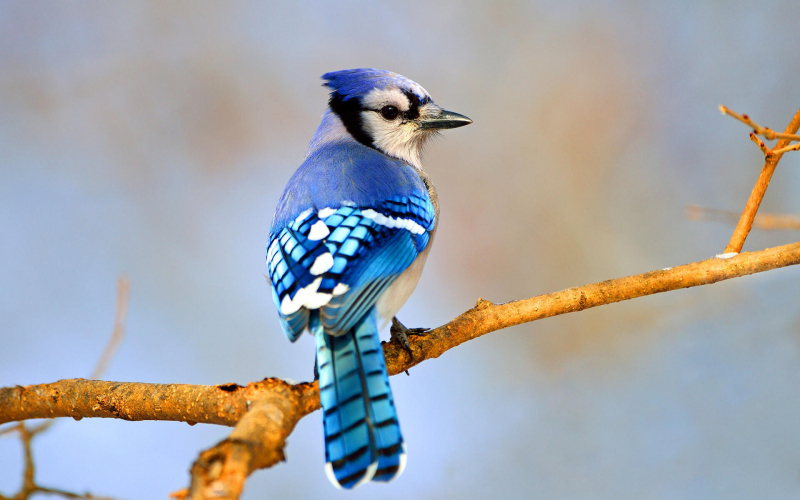
Photo: audubon.org 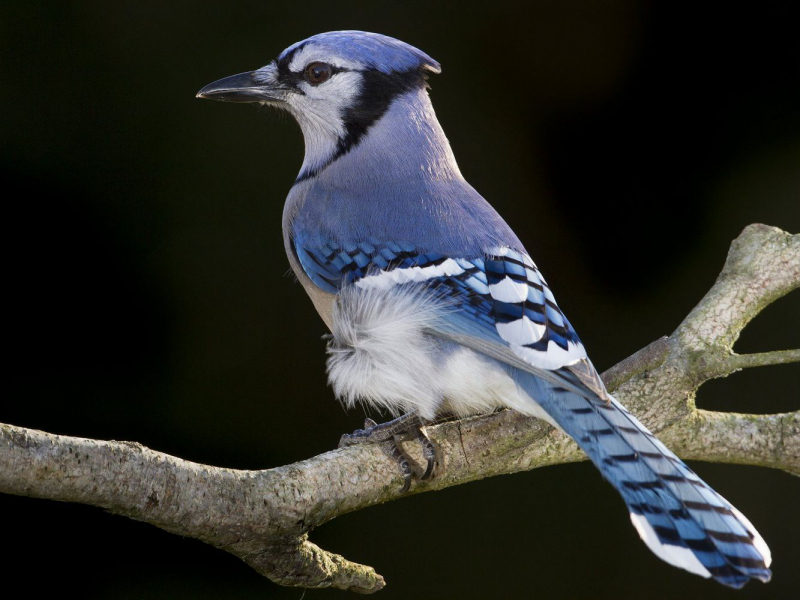
Photo: vovankienthuc.com -
The Bohemian waxwing (Bombycilla garrulus), a passerine bird about the size of a starling, breeds in the arctic and northern woodlands of North America and Europe. It has a pointed crest, mostly buff-grey plumage, and black face markings. It has white and brilliant yellow patterns on its wings, and some of the feather tips have the red waxy appearance that gives this species its name in English. There are barely any visual changes between the three subspecies. Although immature birds are less clearly marked and have fewer or no waxy wingtips, females are identical to males in appearance. Despite sharing a range with the Japanese and cedar waxwings, the Bohemian waxwing can be clearly separated from them due to size and plumage variations.
When seeking food in towns and gardens throughout the winter, waxwings may be quite docile, with rowan berries being one of their favorite foods. They have the ability to break down the alcohol created by fermenting fruit, yet they can still get drunk, sometimes fatally. Predation by raptors, parasite infestation, and collisions with vehicles or glass are some other dangers. The International Union for Conservation of Nature has rated the Bohemian waxwing as being of least concern due to its vast breeding range and strong population density.
When seeking food in towns and gardens throughout the winter, waxwings may be quite docile, with rowan berries being one of their favorite foods. They have the ability to break down the alcohol created by fermenting fruit, yet they can still get drunk, sometimes fatally. Predation by raptors, parasite infestation, and collisions with vehicles or glass are some other dangers. The International Union for Conservation of Nature has rated the Bohemian waxwing as being of least concern due to its vast breeding range and strong population density.
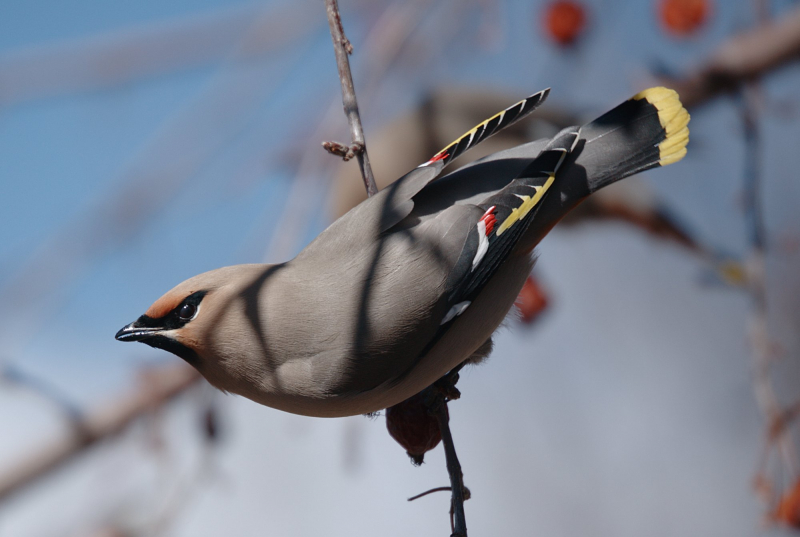
Photo: wikipedia 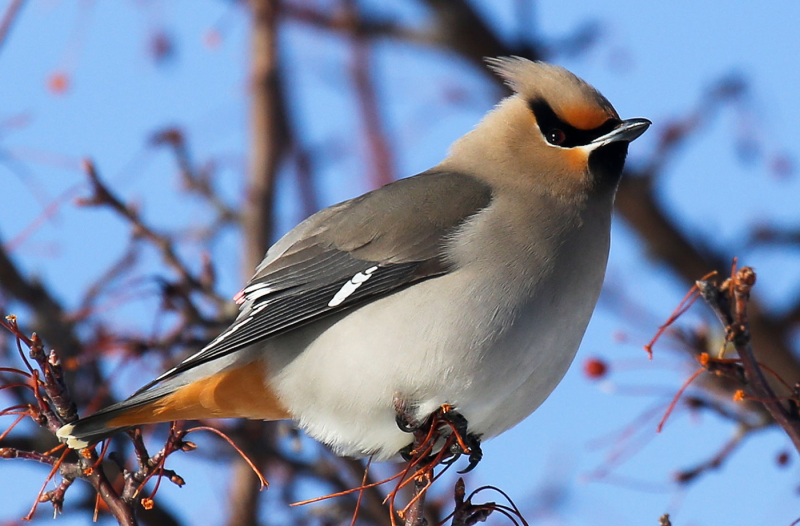
Photo: nrcm.org -
The next position on the list of the most beautiful birds in the world is the wood duck. North America is home to the perching duck species known as the wood duck or Carolina duck (Aix sponsa). One of the most vivid North American waterfowl is the drake wood duck. The adult male has spectacular multicolored iridescent plumage, red eyes, and a characteristic white flair along the neck, in addition to having red eyes. The less colorful female has a whitish neck and a white eye-ring. The heads of both adults are crested.
Although the birds move south for the winter, they are year-round inhabitants in some of their southern areas. They spend the winter close to the Atlantic Coast in the southern United States. In the Pacific Flyway, non-migratory wood ducks make up 75% of the total population. They are regularly reported in Great Britain as escapees because of their striking plumage, and populations have in the past briefly established themselves in Surrey. However, they are not thought to be self-sustaining in the manner of the similarly related mandarin duck.
Wood ducks graze on land or dabble (feed from the surface rather than plunging underwater). They are omnivores because they mostly consume berries, acorns, and seeds as well as insects.
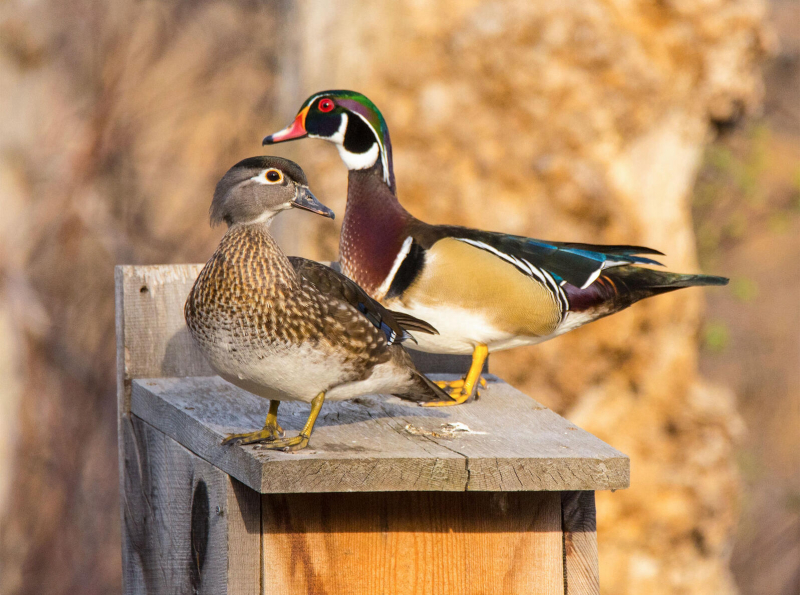
Photo: adubon.org 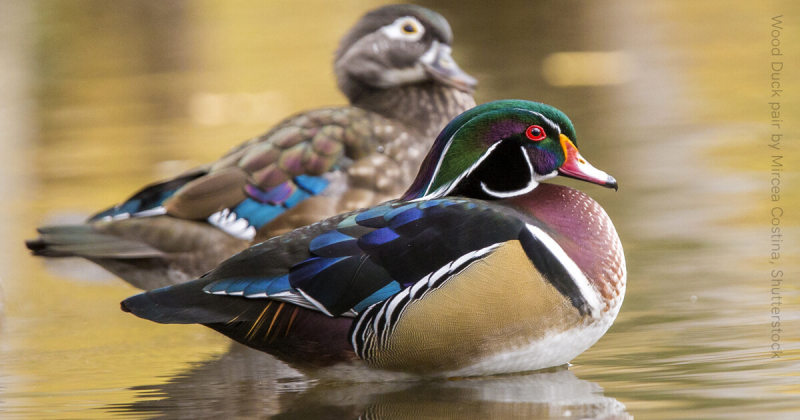
Photo: abcbirds.org -
With a length of 100 cm, the hyacinth macaw is the world's largest species of flying parrot. They can be found in the semi-open areas and savanna grasslands of northern Brazil. Their population has declined in recent years. Currently, there are less than 5000 Hyacinth Macaws left in existence. Hunting and habitat loss are the main threats to hyacinth macaws.
The Hyacinth Macaw is distinguished by its huge size and beautiful azure blue plumage with vivid yellow rings around the eyes. Due to its magnificent hue, the Hyacinth Macaw is also referred to as the "blue Macaw." They also have a sharp, curved black bill and a long, slender tail.
The longest species of parrots are hyacinth macaws. Being referred to as "gentle giants," they are also known to be very even-tempered and occasionally calmer than other macaws. It favors areas that are moderately open and forested. It often stays away from deep, humid forests, and in areas where these habitats are the norm, it is typically limited to the fringe or more open areas. These parrots inhabit a variety of habitats throughout their range, including moriche palm swamps, dry thorn forests known as caatinga, and savannah grasslands. The hyacinth macaw is legally protected in Bolivia and Brazil, and commercial export is prohibited due to its placement in CITES' Appendix I.
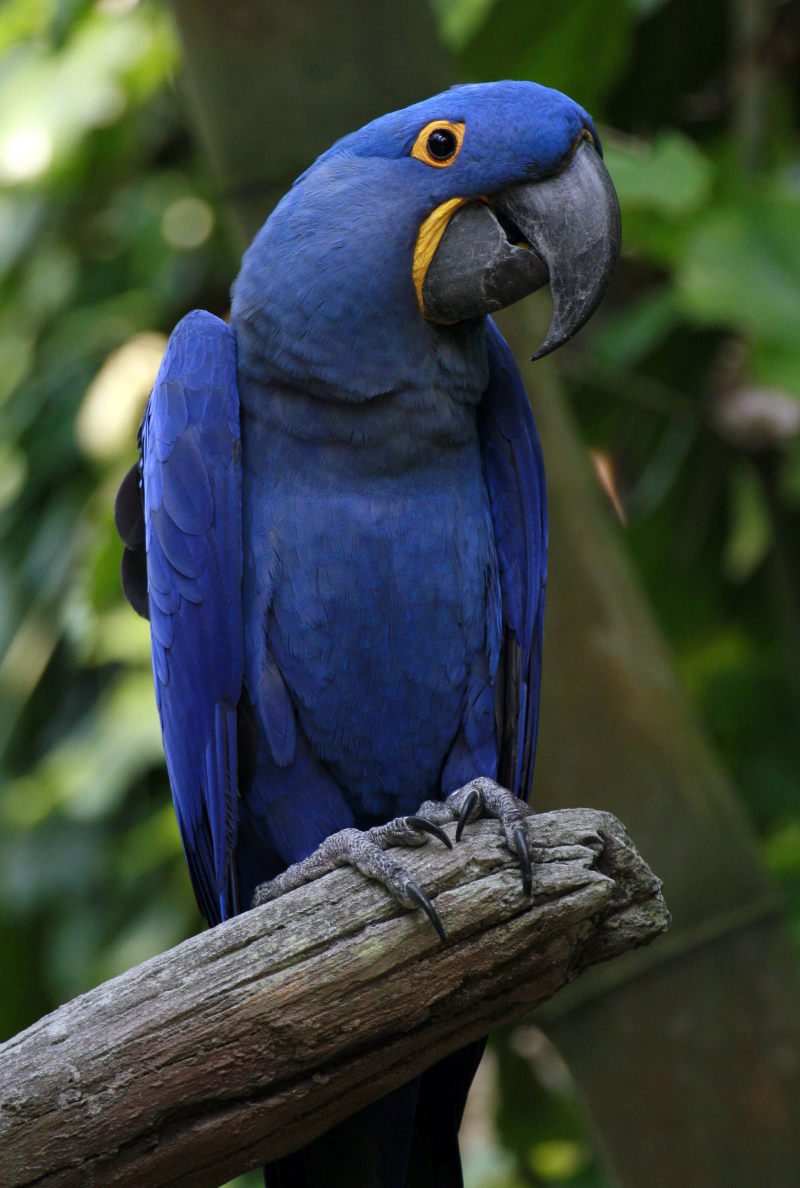
Photo: wikipedia 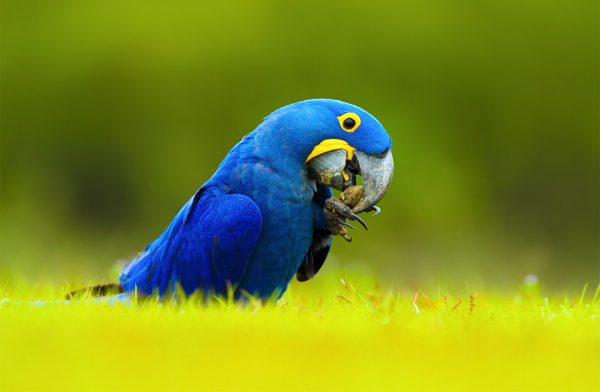
Photo: petmeshop.com













